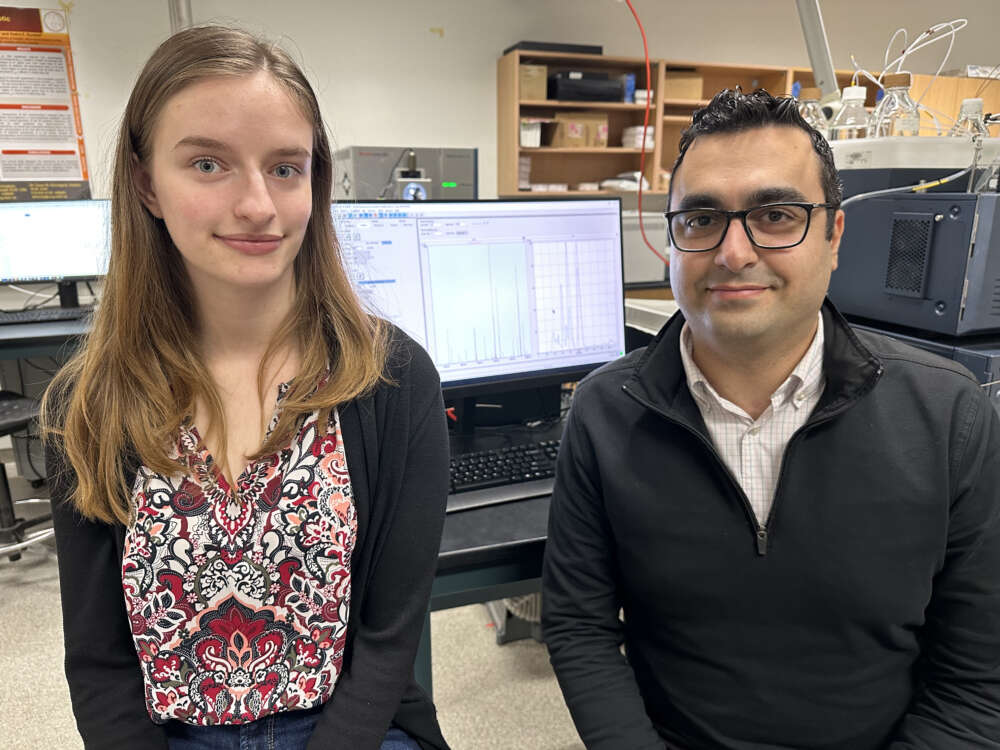A discovery by researchers at the University of Guelph and the Hospital for Sick Children in Toronto may ultimately lead to new therapies for treating tuberculosis (TB).
The team’s finding of a bacterial “dimmer switch” that could help the bug evade the body’s defences may lead to drugs that disable the switch mechanism and ideally thwart the world’s single largest infectious killer, said Dr. Siavash Vahidi, a professor in the Department of Molecular and Cellular Biology within the College of Biological Science.
The discovery is described in a new paper co-authored by Vahidi and PhD candidate Alicia Plourde and published in the Proceedings of the National Academy of Sciences. The study was led by Yingke Liang, a PhD candidate working with senior scientist Dr. John Rubinstein, both in the molecular medicine research program at the Hospital for Sick Children in Toronto.
TB, caused by Mycobacterium tuberculosis, kills about 1.5 million people worldwide and sickens some 10 million each year, according to the World Health Organization. In Canada, Indigenous people are 40 times more likely – and Inuit people are 270 times more likely – to contract TB than non-Indigenous Canadians.
“Tuberculosis is an issue of health care equity that needs to be dealt with,” said Vahidi.
Research into bacterial complex uncovers potential drug target

Rubinstein said, “Our research group at SickKids has been using advanced microscopy methods to visualize the machines that power mycobacteria. This work has relied on a large internal network of collaborators, including Dr. Vahidi, an expert in the technique of mass spectrometry at the University of Guelph.”
Within cells, energy is produced by several respiratory complexes. In their study, the researchers determined the first structure of mycobacterial respiratory Complex 1, including how this component differs from its counterpart in other cells.
One key difference found by the team is a “dimmer switch” within this cellular complex that enables the bug to survive in many different environments.
Comparing respiratory Complex 1 to a car engine, Vahidi said the team found a new “engine part” that had gone unnoticed until now. Using cryogenic electron microscopy and mass spectrometry to peer into molecular structures, he said, “We discovered an extra part in the complex.”
Finding may lead to therapies to disable bacteria
That “extra part” may help the bug hibernate in harsh, nutrient-scarce environments within the body by turning down energy production to the bare minium for survival.
Having found the protein dimmer switch, the researchers tested its function by removing it from bacteria. That prevented part of the bug’s respiratory system from assembling and working properly.
The new finding opens the way to potential new drug treatments, said Vahidi.
“The research could help support the development of a therapy to inhibit the newly found part – or drugs to disable ‘sensors’ that normally help the bug to sense its environment and trigger the dimmer switch,” Vahidi said.
“Several of the most recent new drugs and drug candidates for treating TB target mycobacterial energy production, but this process in mycobacteria is extremely complicated and not well understood,” said Rubinstein. “By visualizing these systems, we can determine how mycobacterial energy production occurs and help guide the development of new TB therapies.”
This study was supported by the Canadian Institutes of Health Research.
Contact:
Dr. Siavash Vahidi
svahidi@uoguelph.ca
